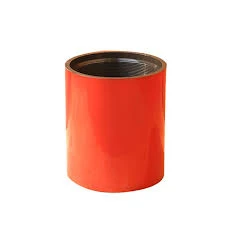- Afrikaans
- Albanian
- Amharic
- Arabic
- Armenian
- Azerbaijani
- Basque
- Belarusian
- Bengali
- Bosnian
- Bulgarian
- Catalan
- Cebuano
- Corsican
- Croatian
- Czech
- Danish
- Dutch
- English
- Esperanto
- Estonian
- Finnish
- French
- Frisian
- Galician
- Georgian
- German
- Greek
- Gujarati
- Haitian Creole
- hausa
- hawaiian
- Hebrew
- Hindi
- Miao
- Hungarian
- Icelandic
- igbo
- Indonesian
- irish
- Italian
- Japanese
- Javanese
- Kannada
- kazakh
- Khmer
- Rwandese
- Korean
- Kurdish
- Kyrgyz
- Lao
- Latin
- Latvian
- Lithuanian
- Luxembourgish
- Macedonian
- Malgashi
- Malay
- Malayalam
- Maltese
- Maori
- Marathi
- Mongolian
- Myanmar
- Nepali
- Norwegian
- Norwegian
- Occitan
- Pashto
- Persian
- Polish
- Portuguese
- Punjabi
- Romanian
- Russian
- Samoan
- Scottish Gaelic
- Serbian
- Sesotho
- Shona
- Sindhi
- Sinhala
- Slovak
- Slovenian
- Somali
- Spanish
- Sundanese
- Swahili
- Swedish
- Tagalog
- Tajik
- Tamil
- Tatar
- Telugu
- Thai
- Turkish
- Turkmen
- Ukrainian
- Urdu
- Uighur
- Uzbek
- Vietnamese
- Welsh
- Bantu
- Yiddish
- Yoruba
- Zulu
vacuum hose coupling
Understanding Vacuum Hose Couplings A Guide
In the world of automotive and industrial applications, understanding the intricacies of vacuum systems can be pivotal for optimal performance. One often overlooked yet critical component of these systems is the vacuum hose coupling. These couplings are essential for maintaining the efficiency of vacuum systems, ensuring seamless fluid dynamics, and minimizing leaks that could result in system failures.
What is a Vacuum Hose Coupling?
A vacuum hose coupling, as the name suggests, is a connector designed to join two sections of vacuum hoses. These couplings must withstand variations in pressure, temperature, and chemical exposure, as they often interact with a range of fluids and gases. The primary function is to create a tight seal between the hoses, preventing air leaks that can compromise the vacuum system's effectiveness.
Types of Vacuum Hose Couplings
There are several types of vacuum hose couplings available, each suited for different applications
1. Barbed Couplings These have raised ridges (or barbs) that grip the inner surface of the hose tightly. They are popular in automotive applications due to their simple design and ease of installation.
2. Clamping Couplings These couplings involve a clamp that secures the hose to the coupler. This design can accommodate various hose sizes and materials, ensuring a strong connection that can handle high-pressure situations.
3. Flanged Couplings Often used in larger industrial systems, these couplings feature flat flanges which are bolted together. They provide a robust solution for heavy-duty applications and allow for easier maintenance due to their accessibility.
4. Quick Disconnect Couplings These are designed for rapid connection and disconnection of hoses, making them ideal for applications requiring frequent changes. They often incorporate a mechanism that ensures a secure fit while allowing for easy release.
vacuum hose coupling

Applications of Vacuum Hose Couplings
Vacuum hose couplings find their use across various sectors, such as automotive, manufacturing, and laboratory settings. In automotive applications, they play a role in systems such as brake boosters and emissions controls, ensuring that vacuum pressure is maintained for optimal vehicle performance.
In industrial settings, vacuum couplings are integral to machinery that relies on suction for the movement of materials or components. Whether transporting delicate powders in pharmaceuticals or managing volatile substances in chemical processing, the integrity of vacuum couplings directly impacts efficiency and safety.
Laboratories also leverage vacuum systems extensively, using these couplings in processes like filtration and distillation. Here, accuracy and reliability are paramount, emphasizing the importance of selecting high-quality couplings that can withstand the specific demands of the applications.
Maintenance and Selection
Choosing the right vacuum hose coupling involves understanding the specific needs of your system. Factors such as pressure rating, chemical compatibility, and temperature resistance should guide your selection process. Regular maintenance, including inspection for cracks, wear, or degradation, is crucial for ensuring the longevity of both couplings and the overall vacuum system.
When it comes to maintenance, it’s vital to replace any compromised couplings to prevent leaks. A simple periodic check can save significant costs associated with inefficiencies and potential system repairs.
Conclusion
In summary, vacuum hose couplings may not be the most glamorous components, but their role in the functionality of vacuum systems is indispensable. Whether in a car’s engine, an industrial machine, or a lab experiment, these couplings ensure that everything runs efficiently. Understanding their types, applications, and maintenance can lead to better performance and reliability across diverse fields. As technology continues to advance, the design and materials used in vacuum hose couplings will likely evolve, bringing even greater efficiency to vacuum systems everywhere.
-
Tubing Pup Joints: Essential Components for Oil and Gas OperationsNewsJul.10,2025
-
Pup Joints: Essential Components for Reliable Drilling OperationsNewsJul.10,2025
-
Pipe Couplings: Connecting Your World EfficientlyNewsJul.10,2025
-
Mastering Oilfield Operations with Quality Tubing and CasingNewsJul.10,2025
-
High-Quality Casing Couplings for Every NeedNewsJul.10,2025
-
Boost Your Drilling Efficiency with Premium Crossover Tools & Seating NipplesNewsJul.10,2025







